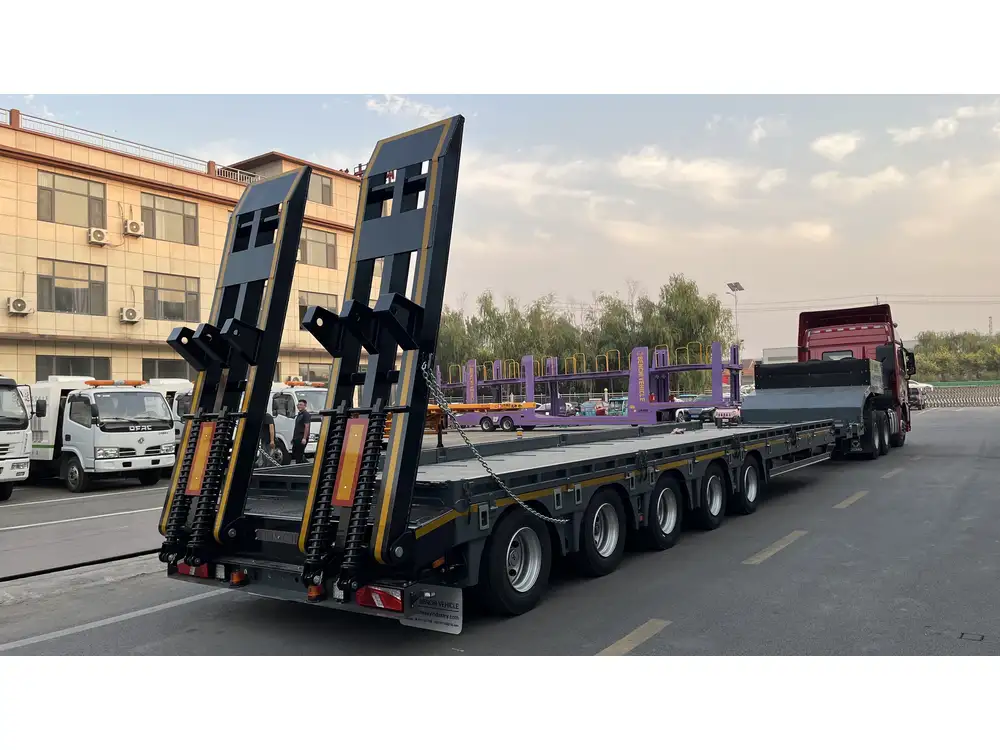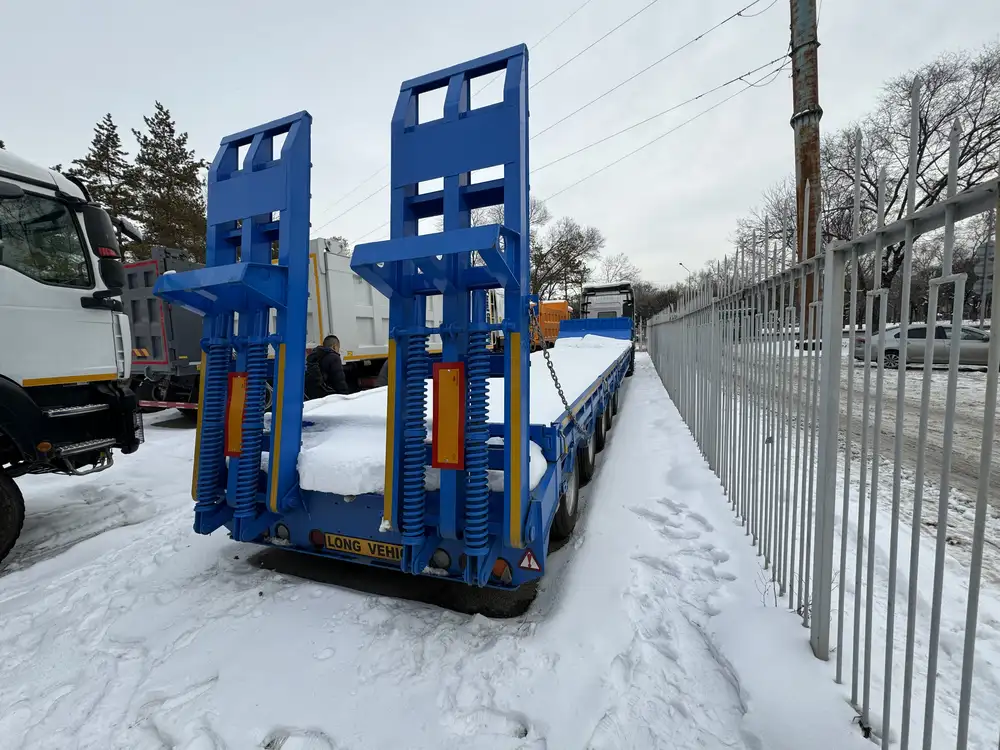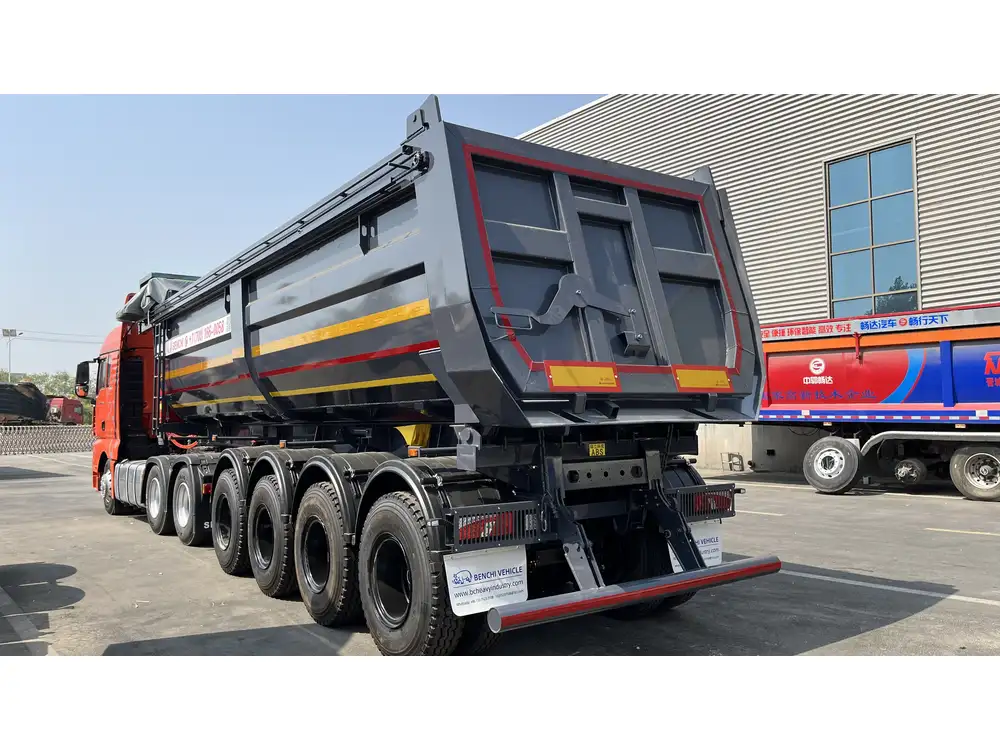When discussing logistics and transportation, one of the most critical factors to consider is the capacity of a semi-trailer. Understanding the cubic meters that a semi-trailer can hold is essential for manufacturers, logistics managers, and anyone involved in the shipping industry. This article dissects the various aspects affecting semi-trailer capacity, examining dimensions, types, and how to maximize efficiency and load management.
1. Basics of Semi-Trailer Dimensions
1.1 Standard Sizes
Semi-trailers come in various sizes depending on usage and regulations. The most common configurations in North America include:
- 53-foot trailers: Commonly used for over-the-road freight.
- 48-foot trailers: Often employed in regional shipping.
- 20-foot and 40-foot containers: Standard sizes for intermodal freight transport.
| Trailer Length | Width | Height | Cubic Meters (Approx.) |
|---|---|---|---|
| 20 ft | 8 ft | 8.5 ft | 33.2 |
| 40 ft | 8 ft | 8.5 ft | 67.6 |
| 48 ft | 8 ft | 8.5 ft | 81.3 |
| 53 ft | 8.5 ft | 9.5 ft | 97.2 |

1.2 Measurement Calculations
To calculate cubic meters, it’s essential to convert the measurements from feet to meters first. Here’s the conversion formula:
[ \text{Cubic Meters (CBM)} = \frac{\text{Length (m) \times Width (m) \times Height (m)}}{1} ]For instance, a 53-foot semi-trailer converts to approximately 16.15 meters in length, 2.44 meters in width, and 2.90 meters in height. Doing the math:
[ 16.15 \times 2.44 \times 2.90 \approx 115.5 \text{ cubic meters} ]This calculation highlights that different trailer types lead to varying capacities, crucial for planning loads.
2. Different Types of Semi-Trailers
Understanding the types of semi-trailers also sheds light on their volumetric capacities. Here’s a breakdown of the most common types:
2.1 Dry Vans
- Cubic Capacity: Typically ranges from 85 to 100 cubic meters.
- Purpose: For non-perishable goods, such as electronics, clothing, and household goods.

2.2 Refrigerated Trailers (Reefers)
- Cubic Capacity: Generally between 75 and 90 cubic meters.
- Purpose: Designed to carry perishable items that require temperature control, such as food and pharmaceuticals.
2.3 Flatbeds
- Cubic Capacity: Depends on cargo type; typically not enclosed.
- Purpose: Used for oversized or irregular cargo like lumber, machinery, and pipes.
2.4 Tankers
- Cubic Capacity: Can hold many cubic meters based on tank design (often over 30,000 liters).
- Purpose: Specially designed to transport liquids like fuel, chemicals, and food-grade liquids.
| Type of Trailer | General Capacity (CBM) | Common Uses |
|---|---|---|
| Dry Van | 85 – 100 | General freight |
| Reefer | 75 – 90 | Perishable goods |
| Flatbed | Varies | Oversized cargo |
| Tanker | 30,000+ liters | Liquid transport |

3. Factors Influencing Semi-Trailer Capacity
3.1 Weight Restrictions
The total capacity of a semi-trailer is often restricted by the maximum weight it can safely transport. Regulations often dictate a Gross Vehicle Weight Rating (GVWR) that includes the weight of the trailer and cargo. Most states in the U.S. regulate this to a maximum of 80,000 pounds (approximately 36,287 kilograms) on interstate highways.
3.2 Loading Configurations
Efficient loading practices can maximize the effective usage of space. Here’s how to optimize loading:
- Use Pallet Racking Systems: Consider implementing pallet racking systems to use vertical space effectively.
- Strategic Load Placement: Heavier items should be placed at the bottom, ensuring a low center of gravity.

3.3 Trailer Design Features
Different design features contribute to capacity:
- Enclosed vs. Open Trailers: Enclosed trailers (like dry vans) provide security but may have volume restrictions due to internal dimensions.
- Curtainsiders: These allow for easy access to cargo from the side, optimizing loading efficiency while maintaining a decent cubic capacity.
4. Tips for Optimizing Trailer Capacity
Maximizing cubic meter efficiency involves several strategies that logistics operators can implement:
4.1 Calculate Volume Accurately
Always measure cargo dimensions and calculate its volume before loading. This ensures you do not exceed capacity or underutilize space.

4.2 Use Cubic Packing Models
Familiarize yourself with cubic packing models that maximize space. This mathematical approach can enhance the arrangement of items to minimize empty volume.
4.3 Choose the Right Trailer Type
Selecting the proper type of semi-trailer is paramount. For example, if transporting perishables, a reefer is essential. Conversely, for heavier materials, flatbeds or dry vans may be suitable.
4.4 Stay Updated on Regulations
Remain aware of weight regulation changes and truck specifications in various regions to ensure compliance while optimizing load size.

5. Understanding the Cost-Benefit Ratio of Semi-Trailer Capacity
5.1 Price of Efficient Transport
Higher cubic capacity usually comes with increased costs; however, better capacity management often translates into higher profits due to reduced transportation costs per cubic meter of goods transported. Here’s a table illustrating potential savings based on different loading scenarios:
| Scenario | Capacity Utilized | Transportation Cost per Cubic Meter |
|---|---|---|
| Low Efficiency (50% Utilization) | 50 CBM | $20 |
| Moderate Efficiency (80% Utilization) | 80 CBM | $15 |
| High Efficiency (95% Utilization) | 95 CBM | $12 |
5.2 Return on Investment
Investing in newer trailers with enhanced capacity and efficiency can yield a substantial return on investment. Though the upfront cost may be higher, operational savings and increased load capability often offset initial expenditures.

6. Conclusion: Making Informed Decisions
Understanding the capacity of semi-trailers measured in cubic meters is essential not only for logistics managers and manufacturers but also for anyone involved in the transportation industry. By grasping the variations in trailer types, dimensions, regulatory constraints, and optimization strategies, companies can make informed decisions that enhance operational efficiencies, cost savings, and profitability.
In sum, the world of semi-trailers is as complex as it is essential for effective freight movement. Therefore, continual learning and adaptation are crucial in this field, ensuring that every cubic meter counts in contributing to a successful logistics strategy.



